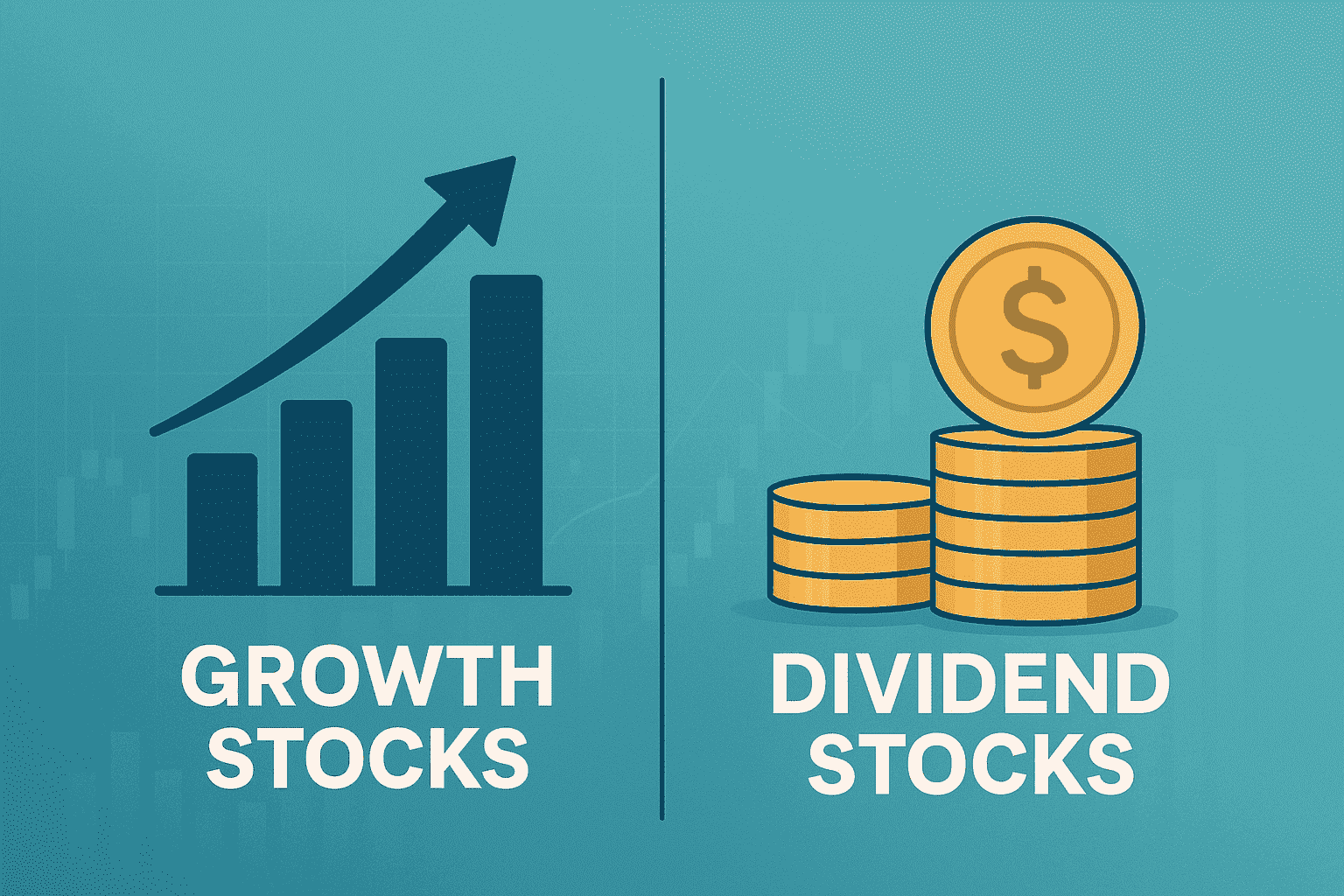Business
How to Save Money When Ordering Business Checks

Business checks are an essential tool for managing a company’s financial transactions, whether for paying vendors, employees, or utility bills. However, the cost of ordering business checks can quickly add up, especially for small businesses that operate on tight budgets. Fortunately, there are several strategies you can use to save money without sacrificing quality or professionalism.
In this article, we’ll explore various ways to reduce the cost of ordering business checks and help you make smart financial decisions for your company.
1. Order Checks in Bulk
One of the most effective ways to save money on business checks is to order in bulk. Like many other products, checks become cheaper when purchased in larger quantities. If your business issues checks frequently, ordering a larger batch will reduce the cost per check, saving you money in the long run.
Why Bulk Ordering Helps:
- Lower Cost per Check: When you order checks in bulk, many suppliers offer discounted rates, resulting in significant savings.
- Fewer Orders Over Time: By ordering a larger quantity upfront, you’ll reduce the frequency of reorders, which can lower shipping costs and prevent price increases from affecting your future purchases.
How to Implement:
- Estimate Usage: Calculate how many checks your business typically uses in a year and order accordingly. This ensures you don’t run out of checks while maximizing your bulk savings.
- Shop Around for Deals: Different suppliers offer various bulk discount packages, so compare pricing from multiple vendors to find the best deal.
Bulk ordering is ideal for businesses that consistently issue checks, as it allows you to stock up and reduce your overall spending.
2. Compare Prices from Different Suppliers
Business check suppliers vary widely in terms of pricing, quality, and services. Before making a purchase, it’s important to shop around and compare prices from multiple providers. Doing some research can help you find the best combination of affordability and quality.
Where to Compare:
- Online Suppliers: Many online retailers offer business checks at lower prices than traditional banks. Check websites like Checks Unlimited, Deluxe, and Costco for competitive pricing.
- Local Print Shops: Local printing businesses may offer personalized deals or discounts, especially if you’re a returning customer.
- Bank vs. Third-Party Suppliers: While ordering checks directly from your bank may seem convenient, third-party suppliers often provide more affordable options without compromising on security or customization.
When comparing suppliers, be sure to factor in shipping costs and any additional fees that could affect the total price.
3. Use Coupons and Promotions
Many check printing companies offer discounts, coupons, or promotional codes for new customers or bulk orders. Keep an eye out for these deals when ordering business checks to maximize your savings.
How to Find Discounts:
- Check Supplier Websites: Before placing an order, visit the supplier’s website to see if they offer discounts or promotions. Some suppliers offer seasonal sales, such as back-to-business deals or holiday discounts.
- Sign Up for Newsletters: Many check providers offer discounts for signing up for their newsletters or loyalty programs. These newsletters often include exclusive promotions and discounts.
- Search for Coupon Codes: Websites like RetailMeNot or Honey can help you find valid coupon codes for check suppliers. Enter these codes at checkout to save a percentage off your total order.
Using coupons and promotions is a simple yet effective way to lower the cost of business checks.
4. Opt for Standard Check Designs
While it can be tempting to choose elaborate designs with custom features for your business checks, these enhancements can significantly increase the cost. To save money, consider sticking to a standard design that includes your logo and essential information but avoids expensive customizations.
Why Standard Designs Are More Affordable:
- Lower Printing Costs: Standard designs are easier and quicker to produce, which lowers the printing cost for the supplier.
- Avoid Unnecessary Add-Ons: Features like premium paper, additional security layers, or intricate color schemes can increase the overall price of the checks. Opting for a basic design will keep costs down.
You can still maintain a professional image with standard designs while saving on printing costs.
5. Reuse Check Templates
If you’ve previously ordered custom checks with your company’s branding, consider reusing the same template for future orders. Customizing a new design each time you place an order can incur additional setup fees. By reordering from the same supplier with an existing design, you can avoid these extra costs.
Benefits of Reusing Templates:
- No Setup Fees: Many suppliers charge a design or setup fee when creating a new check template. By reusing your old template, you can avoid these fees.
- Consistency: Using the same design ensures brand consistency across all financial documents, helping to maintain a professional image.
Reordering from a pre-existing template is a simple way to save money while ensuring brand continuity.
6. Consider Using Digital Payments for Smaller Transactions
While business checks are necessary for certain payments, you might find that some smaller transactions can be handled more efficiently through digital payment methods. By reducing the number of checks you issue, you can lower the frequency of orders, saving money in the long term.
Alternatives to Checks:
- ACH Transfers: Automated Clearing House (ACH) transfers are a cost-effective and secure way to transfer funds electronically. Many banks offer low or no fees for ACH payments, making them a great alternative to checks.
- Online Payment Platforms: Services like PayPal, Venmo, or Zelle are suitable for small transactions and offer lower fees than the cost of printing and mailing checks.
By using electronic payment methods for smaller transactions, you’ll reduce the need for checks and cut down on ordering costs.
7. Negotiate with Suppliers for Better Rates
If your business regularly orders checks in large quantities, you may be able to negotiate better rates with suppliers. Building a long-term relationship with your check provider could lead to discounts or special pricing.
Tips for Negotiation:
- Ask for Volume Discounts: If you’re placing a large order, ask your supplier if they offer bulk pricing or discounts for repeat customers.
- Establish a Long-Term Partnership: By committing to a long-term partnership with a supplier, you may be able to secure lower prices over time.
Negotiating with your supplier can help you get the best possible price, especially if you’re a loyal customer.
8. Choose Generic Security Features
Security features are important when ordering business checks, as they help prevent fraud and unauthorized transactions. However, some high-end security options can be costly. To save money, opt for standard security features that still protect your checks but come at a lower price point.
Common Security Features:
- Watermarks: A basic but effective security measure that deters counterfeiters without adding significant cost.
- Microprinting: Tiny printed text that is hard to replicate and helps prevent fraud.
- Heat-Sensitive Ink: An affordable option that reveals tampering attempts but doesn’t drastically increase the check cost.
Stick with these basic security features to keep your business checks secure while avoiding high-end, unnecessary extras.
Conclusion
Ordering business checks doesn’t have to be an expensive endeavor. By ordering in bulk, comparing suppliers, using coupons, and opting for standard designs, you can significantly reduce costs while still maintaining professionalism. Additionally, leveraging digital payment alternatives for small transactions and reusing existing templates can further streamline expenses. With a bit of research and planning, you can save money on business checks and allocate those savings toward other critical areas of your business.
Business
The Troubling Phenomenon of Pastors Selling Land in Heaven: Faith, Money, and Accountability

In a world where faith communities often rely on trusted spiritual leaders, reports of pastors promising heavenly real estate in exchange for donations or purchases have emerged with unsettling frequency. The notion of “selling land in heaven” is not just a quaint parable turned sales pitch; it touches on theology, ethics, church governance, and the vulnerable finances of believers. This article examines the phenomenon from multiple angles: how it happens, why it resonates for some, the risks involved, and practical ways to protect congregants and promote accountability.
What It Means to “Sell Land in Heaven”
Defining the Core Idea
- The phrase often describes attempts by a religious leader to monetize spiritual promises by claiming that donations, purchases, or specific financial acts will secure a tangible reward in the afterlife.
- Common patterns include:
- Promises of wealth, health, or favor in return for large gifts or “seed money.”
- Taxing or labeling certain donations as “spiritual investments” that guarantee heavenly returns.
- Framing ongoing financial commitments as foundational to personal salvation or community blessing.
The Theology Some Use to Justify It
- The practice draws on misinterpretations of prosperity gospel, indulgences, or ritualized acts of giving as merit-based currency.
- In some cases, leaders use persuasive rhetoric about spiritual capitalism: “Heaven’s inventory is stocked by your generosity today.”
Distinguishing Between Generous Giving and Exploitative Claims
- Healthy church giving often arises from voluntary, informed giving tied to transparent budgeting and mission-focused needs.
- Exploitative pitches tend to:
- Create a sense of coercion or isolation for those who cannot participate financially.
- Use fear-based language about sin, punishment, or divine withheld blessings.
- Offer vague or unverifiable “returns” that cannot be measured in tangible outcomes.
Why This Practice Persists
Psychological and Social Drivers
- Belonging and identity: For many, church affiliation provides community and purpose; compelling promises can reaffirm that belonging.
- Hope and agency: In uncertain times, people crave assurance. Promises of heavenly rewards can feel hopeful, even if unfounded.
- Authority and trust: Charismatic leaders wield influence; congregants may defer to perceived spiritual expertise.
Economic Incentives and Organizational Dynamics
- Revenue streams: Some churches rely on donations for operational viability, renovations, or ambitious programs.
- Longevity of leadership: In systems with centralized leadership, a single pastor’s vision (and finances) can dominate decision-making.
- Power dynamics: Financial control can translate into influence over congregants’ personal lives and choices.
The Ethical and Legal Landscape
Ethical Boundaries for Religious Leadership
- Most faith traditions emphasize stewardship, humility, and care for the vulnerable.
- Ethical concerns arise when faith is weaponized for financial gain, or when manipulation, coercion, or deception is used.
Legal and Regulatory Considerations
- In many jurisdictions, religious organizations enjoy certain tax exemptions. This status comes with accountability expectations, transparency requirements, and anti-fraud protections.
- Legal questions can arise around:
- Misrepresentation or fraud if promises imply monetary sales for heavenly outcomes.
- Consumer protection issues when individuals are marketed goods (even if intangible) under false pretenses.
- Nonprofit governance standards, including fiduciary duties, conflicts of interest, and financial disclosures.
Real-World Impacts: Consequences for Congregants
Financial Harm
- Congregants may deplete savings, incur debt, or forego essential expenses to meet donation targets.
- Wealth disparities can widen, with vulnerable members disproportionately affected.
Spiritual and Emotional Harm
- Trust erodes when promises fail or are revealed as transactional.
- Feelings of guilt, shame, or spiritual injury can linger long after a sermon.
Community Trust and Institutional Health
- Word spreads beyond a single church, affecting broader perceptions of religious institutions.
- Donor fatigue and skepticism can hinder legitimate fundraising and mission work.
Detecting and Responding to Exploitative Practices
Early Warning Signs
- Consistent use of “seed faith” language tied to specific monetary commitments.
- Pressure tactics: “If you love God, you will give…” or guilt-based messaging.
- Promises that prayer or sacrifice will guarantee specific, verifiable outcomes in heaven.
- Lack of transparency around finances, budgets, and how funds are used.
Practical Steps for Congregants
- Request transparent financial reporting: budget outlines, how donations are allocated, and measurable outcomes.
- Seek independent oversight: establish or support a finance committee with diverse leadership.
- Compare claims with core doctrine: consult multiple trusted theological sources to evaluate the claims.
- Practice informed giving: avoid pressure-filled decisions; take time to reflect and consult mentors or advisors.
Steps for Church Leadership and Governance
- Establish clear ethical guidelines: codify boundaries between spiritual leadership and financial solicitation.
- Build robust governance structures: independent treasurers, audit processes, and policies on conflicts of interest.
- Foster accountability culture: open forums, grievance mechanisms, and whistleblower protections.
- Prioritize education: equip congregants with media literacy and critical thinking about fundraising rhetoric.
Practical, Evidence-Based Alternatives to Faith-Based Real-World Costs
If a faith community seeks to support its mission without compromising ethical standards, here are constructive approaches:
- Transparent stewardship campaigns: clearly articulate needs, timelines, and outcomes; provide regular financial updates.
- Mission-driven fundraising: tie gifts to specific, auditable programs (e.g., scholarships, community services) with measurable impact.
- Membership-based budgeting: align programs with real, documented community needs and capacity, avoiding coercive tactics.
- Independent audits: annual external audits and published audit reports to build trust.
- Beneficiary-centered models: ensure programs prioritize the well-being and autonomy of those served, with consent and dignity at the forefront.
Case Studies: Lessons from the Field
Note: This section offers generalized, anonymized patterns to illustrate insights without naming specific individuals or churches.
- Case A: A growing church faced rapid expansion and instituted a bold “project seed” fundraiser. After initial enthusiasm, financial shortfalls and member complaints mounted. An external audit revealed a lack of budget transparency, leading to policy reforms and the creation of an independent oversight board.
- Case B: A pastors’ council implemented a transparent giving policy, separating spiritual messaging from financial pitches. The initiative included annual financial disclosures and a code of conduct, rebuilding trust among congregants.
- Case C: A denomination issued a ethics charter prohibiting fundraising practices that promise celestial benefits. The charter was accompanied by training on ethical stewardship and a clear complaint mechanism.
FAQs
- Is it illegal for a pastor to promise heaven in exchange for money?
- Legality varies by jurisdiction. Some practices may violate fraud or consumer protection laws, especially if misrepresentations are involved. Ethical concerns remain even if there isn’t a specific statute broken.
- How can I protect myself from exploitative fundraising in my church?
- Seek transparent financial information, ask questions about how funds are used, advocate for independent audits, and discuss concerns with trusted leaders or denomination authorities.
- What should I look for in a healthy church fundraising strategy?
- Clarity, consent, accountability, measured outcomes, and alignment with the mission. Fundraising should inform and empower, not coerce or promise guaranteed spiritual returns.
- How can churches balance generosity with ethical fundraising?
- Emphasize stewardship education, transparent budgets, and community-focused initiatives. Avoid language that implies guaranteed heavenly rewards tied to gifts.
- If I suspect fraud in a religious organization, what should I do?
- Document concerns, seek counsel from trusted advisors, and report to appropriate authorities or denominational oversight bodies. If there are imminent risks to individuals, contact local authorities.
- Are there positive models for faith-based fundraising?
- Yes. Models that prioritize transparency, accountability, and mission impact—such as project-based campaigns, matched giving, or endowments—toster trust and long-term sustainability.
- How can denominational bodies help prevent these practices?
- By issuing ethical guidelines, providing training, establishing independent audit mechanisms, and creating safe channels for reporting concerns.
Conclusion: Navigating Faith, Finance, and Integrity
The temptation to frame heavenly outcomes as commodities is powerful in some contexts. Yet the integrity of religious communities hinges on a careful balance between generosity and accountability. Faith leaders have a responsibility to shepherd communities with honesty, humility, and vigilance against the misuse of spiritual authority for financial gain. Congregants deserve transparency, respect, and opportunity to participate in decisions that affect their livelihoods and beliefs.
If you’re navigating a situation where a pastor or church seems to be monetizing heaven or making heaven a saleable commodity, you’re not alone. Start with questions, seek corroboration, and lean on governance mechanisms that prioritize the dignity and wellbeing of every member. By fostering transparent practices, ethical leadership, and accountable stewardship, religious communities can sustain their mission without compromising trust or faith.
More pages
The Art and Science of Pressure Washing: How Professional Services Revitalize Your Property
Business
Growth vs. Dividend: Where Should You Park Your Capital?

When considering long-term wealth creation, one of the early decisions in stock investing often revolves around this question: Should you prioritise capital appreciation or regular income? This is essentially the distinction between growth stocks and dividend stocks.
Both types of stocks serve different purposes and appeal to different investor profiles. In this blog, we will walk through what they mean and when each might be more suitable depending on your financial goals and stage in life.
What Are Growth Stocks?
Growth stocks represent companies that typically reinvest their profits to speed up business expansion rather than distributing dividends to shareholders. These are businesses with strong earnings potential, operating in sectors that are expected to grow faster than the broader economy.
The core idea is capital appreciation. Investors in growth stocks rely on the share price rising over time, aiming to benefit from the business’s increasing value. These may be more suitable for individuals with a longer investment horizon and the willingness to tolerate short-term volatility in exchange for potentially higher long-term gains.
What Are Dividend Stocks?
Dividend stocks, on the other hand, are companies that share a portion of their profits with shareholders at regular intervals, typically quarterly or annually. These are usually well-established firms with steady cash flows that don’t require all their earnings for reinvestment.
These stocks are often preferred by investors looking for periodic income, such as retirees or those seeking to supplement cash flows without needing to sell their holdings. While they may not offer the same growth as their counterparts, the consistency of dividend payouts offers a level of stability. This becomes particularly important in uncertain market conditions.
How to Decide Which Suits You Better?
So, should you go with the fast-paced potential of growth stocks or the steady, rewarding path of dividend stocks? Let’s compare the two across a few key areas.
1. Investment Objective
Growth stocks are generally suitable for those aiming to build long-term wealth and don’t require immediate income from their investments.
Dividend stocks are more aligned with those seeking regular income or looking to reduce portfolio volatility.
2. Risk and Volatility
Growth stocks tend to be more volatile, as their returns are closely tied to market sentiment, earnings growth, and industry trends.
Dividend stocks are from more stable and large-cap companies, which are relatively stable and may help cushion a portfolio during market downturns.
3. Reinvestment Approach
In growth stocks, earnings are typically reinvested by the company itself, supporting internal compounding and potential for business expansion.
Dividend stocks distribute the earnings to investors, allowing flexibility in how that income is used, be it reinvestment or consumption.
The best approach is to diversify by adding both growth and dividend stocks.
A balanced approach lets you enjoy growth in your early investing years and steady income later when you prefer more stability.
Final Thoughts
There is no one-size-fits-all answer to the growth vs. dividend debate. The better question is: What suits your financial goals, time horizon, and temperament?
If you have a long-term view, and are focused on building wealth, growth stocks may be your ticket. But if you appreciate cash flow or want to hedge against volatility, dividend stocks can add stability to your portfolio.
In the end, it is not about choosing one over the other. It is about aligning your investments with your life stage and goals. Park your capital where it grows and serves you best.
Business
UK Housing Market Predictions for 2026: A Practical Look at What’s Coming

The UK housing market has always been a bit of a rollercoaster—full of ups, downs, and unexpected twists. Whether you’re trying to get on the property ladder, thinking about selling, or considering an investment, knowing what’s coming can make all the difference.
So, what can we actually expect by 2026? Will prices keep rising? Will mortgages become more affordable? And where are the best opportunities for buyers and investors?
Let’s break it all down—without the jargon—so you can make smart decisions for your future.
1. Where We Are Now: The 2024 Housing Market Snapshot
Before we jump into predictions, it’s worth looking at where things stand today.
-
House Prices: After the pandemic boom, prices have cooled off a bit. Higher mortgage rates and living costs have made buyers more cautious.
-
Mortgage Rates: With the Bank of England base rate at 5.25% (as of mid-2024), borrowing isn’t cheap. Many first-time buyers are struggling to save for deposits while rents eat into their budgets.
-
Supply & Demand: There still aren’t enough homes, especially affordable ones. This keeps prices from dropping too much, even when demand slows.
This sets the stage for what’s likely to happen over the next couple of years.
2. What Will Shape the Market in 2026?
Several big factors will determine whether 2026 is a buyer’s, seller’s, or investor’s market.
A. Will Mortgage Rates Finally Drop?
This is the million-pound question. Experts think rates could ease to around 4-4.5% by 2026 if inflation keeps falling. That would make mortgages more manageable, especially for first-time buyers.
But if inflation stays stubborn, rates might not budge much. Keep an eye on the Bank of England’s moves in 2025—they’ll give us the best clues.
B. Will House Prices Rise or Fall?
Most forecasts suggest slow but steady growth (1-3% per year) rather than a crash or boom. Why?
-
Shortage of homes means prices won’t plummet.
-
Affordability limits mean they won’t skyrocket either.
That said, some areas will do better than others (more on that soon).
C. Will More Homes Be Built?
The government keeps promising to fix the housing crisis, but progress is slow. We’d need 300,000+ new homes a year just to keep up with demand—right now, we’re falling short.
Until that changes, prices in popular areas will stay high.
D. How Will Politics Play a Role?
The next general election (due by early 2025) could shake things up.
-
Labour might push for more social housing and rent controls.
-
Conservatives could tweak Help to Buy or stamp duty rules.
Either way, policy changes could sway the market—so stay tuned.
3. Where Will Prices Grow the Most? (Regional Breakdown)
Not all parts of the UK will move at the same pace. Here’s what to expect:
London & the South East: Slow and Steady
-
Prices are already so high that growth will likely be minimal (0-2%).
-
Prime central London could bounce back if foreign investors return.
The North & Midlands: Still Hotspots
-
Cities like Manchester, Birmingham, and Leeds offer better affordability and strong job markets.
-
Big projects like HS2 (if it happens) will keep demand high.
Scotland & Wales: A Mixed Picture
-
Edinburgh and Glasgow remain strong, but rural areas may slow down.
-
Wales is seeing more buyers priced out of England, boosting demand in places like Cardiff.
4. The Rental Market in 2026: More Pain for Tenants?
If you’re renting, brace yourself:
-
Rents will keep rising—landlords are passing on higher mortgage costs.
-
Fewer rental homes—some landlords are selling up due to tax changes and regulations.
-
Build-to-Rent growing—big investors are stepping in, but these flats often come at a premium.
Renters’ tip: If you find a good deal, consider a longer lease to lock in the rate.
5. Smart Moves for Buyers, Sellers & Investors
If You’re Buying…
✅ Watch mortgage rates closely—if they dip below 4.5%, jump on a deal.
✅ Look beyond London—cities like Sheffield and Liverpool offer better value.
✅ Check for government schemes—shared ownership or First Homes could help.
If You’re Selling…
✅ Price realistically—over-ambitious sellers are struggling in today’s market.
✅ Boost your home’s appeal—small fixes (fresh paint, decluttering) can make a big difference.
✅ Be patient—if the market’s slow, you might need to wait for the right buyer.
If You’re Investing…
✅ Focus on high-yield areas—Manchester, Liverpool, and Birmingham still offer solid returns.
✅ Consider HMOs—renting by the room can maximise income.
✅ Watch out for tax changes—new rules could affect your profits.
Final Thought: A More Balanced Market Ahead
2026 probably won’t bring a housing crash or a sudden boom. Instead, expect a steady, slower-moving market where:
-
Prices creep up slightly in most areas.
-
Mortgages get a bit cheaper (but don’t expect pre-2022 rates).
-
Rents keep rising unless the government steps in.
The key takeaway? Do your homework, stay flexible, and don’t rush into decisions. Whether you’re buying, selling, or investing, the right move depends on your personal situation—not just the market.
You Should also read this post










